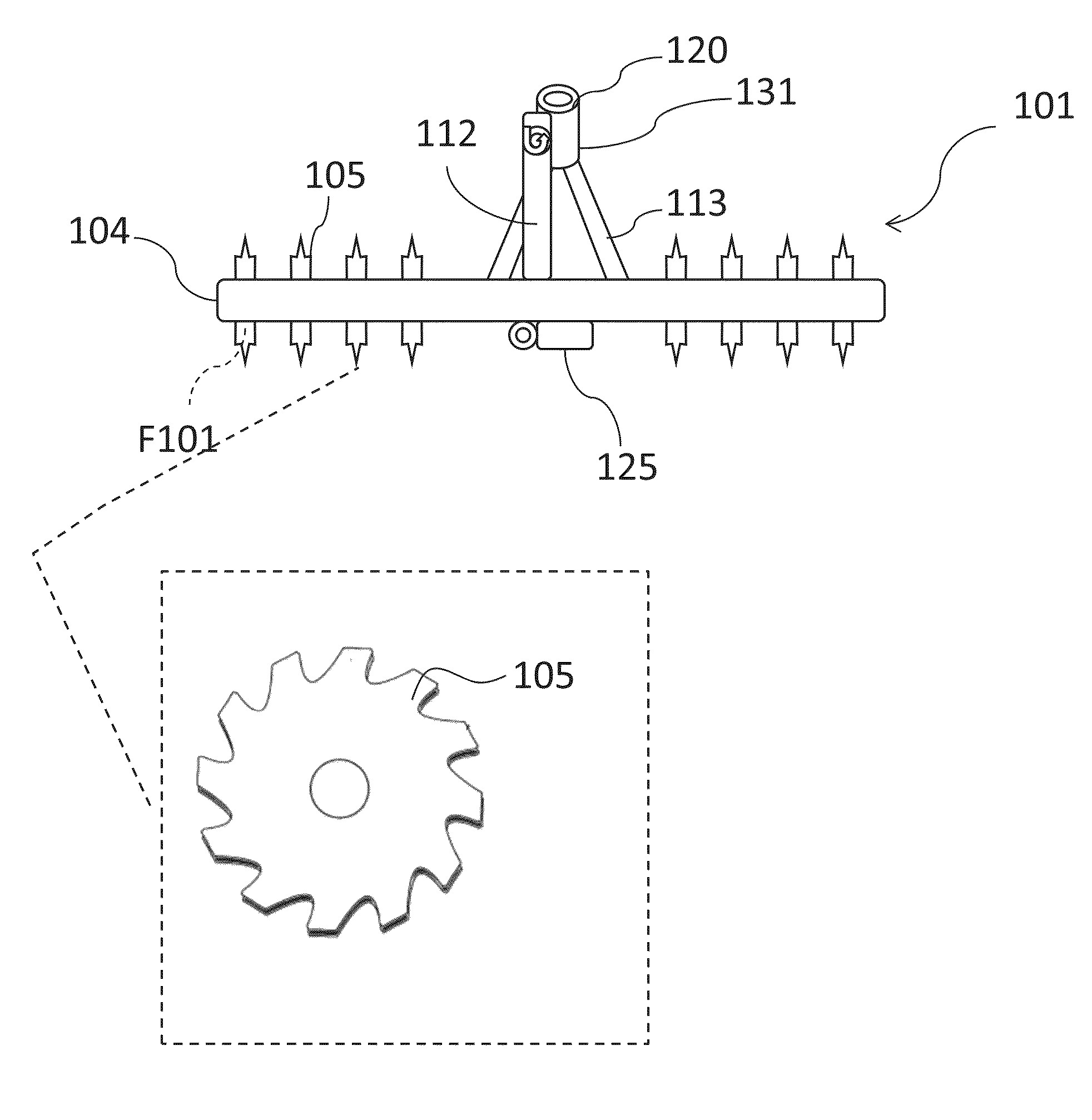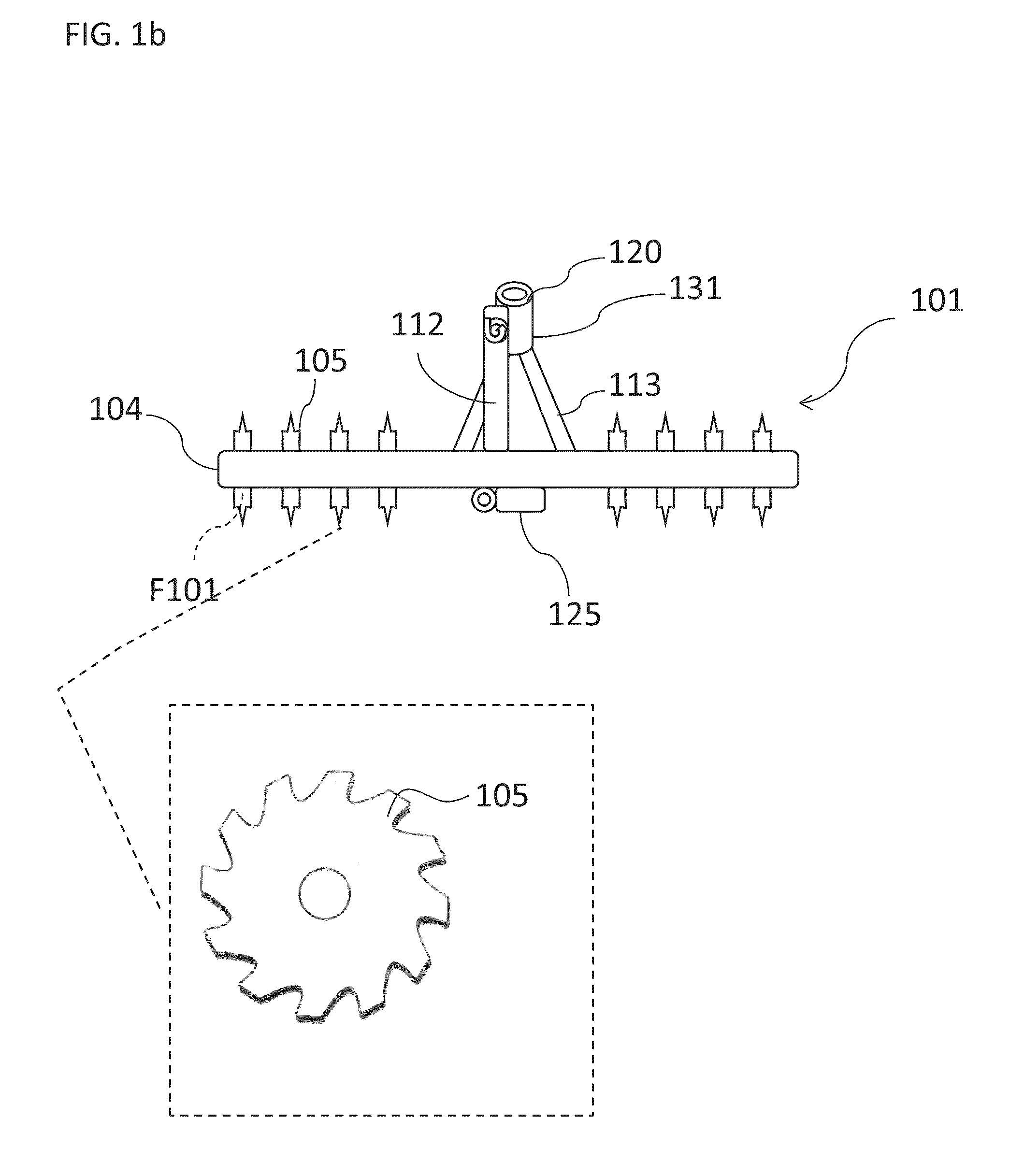Tillage system
a technology of tillage system and tillage hole, which is applied in the field of tillage system, can solve the problems of limiting the ability of water to enter the field, unfavorable water run-off, and unfavorable plant stock and weed growth, so as to achieve the effect of reducing the amount of water runoff, and ensuring the appearance of tilled fields
- Summary
- Abstract
- Description
- Claims
- Application Information
AI Technical Summary
Benefits of technology
Problems solved by technology
Method used
Image
Examples
Embodiment Construction
[0054]This invention relates to a tilling system adapted to be added-on to existing agricultural devices, including vertical tilling, vertical combination, horizontal and conventional tilling and fertilizer machinery. The add-on tilling system generally comprises a tool bar that carries a plurality of tillage tools, preferably comprising deep tilling tines, each being adjustable in spacing and adapted to be lowered or raised above the ground. The tool frame preferably carries a row deep tilling tine, however it is noted that a plethora of different tilling coulters can be utilized. All of the deep tilling tines and shallow tilling coulters run at the ground speed of the tillage system selected by the tillage system operator.
[0055]The subject tilling system provides the ability to readily convert agricultural tools or devices to include deep tillage by adding the subject tilling system / unit to the existing separate agricultural device. For example, the following agricultural devices ...
PUM
 Login to View More
Login to View More Abstract
Description
Claims
Application Information
 Login to View More
Login to View More - R&D
- Intellectual Property
- Life Sciences
- Materials
- Tech Scout
- Unparalleled Data Quality
- Higher Quality Content
- 60% Fewer Hallucinations
Browse by: Latest US Patents, China's latest patents, Technical Efficacy Thesaurus, Application Domain, Technology Topic, Popular Technical Reports.
© 2025 PatSnap. All rights reserved.Legal|Privacy policy|Modern Slavery Act Transparency Statement|Sitemap|About US| Contact US: help@patsnap.com



